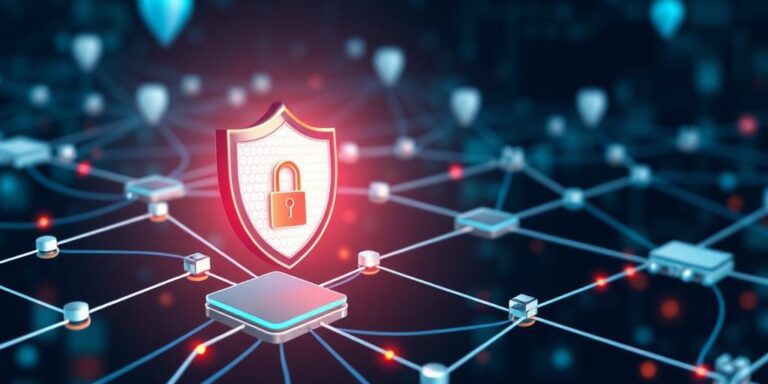Building a Secure IoT Ecosystem: Standards and Best Practices (2025)
The Internet of Things (IoT) has revolutionized how we interact with technology, connecting devices and systems across various sectors, from smart homes to industrial automation. However, this interconnectedness introduces significant security challenges. As we move towards 2025, establishing a secure IoT ecosystem is more critical than ever. This post outlines essential standards and best practices for building robust and secure IoT solutions.
Understanding the IoT Security Landscape
The IoT landscape is diverse, encompassing a wide range of devices, communication protocols, and applications. This complexity creates numerous potential entry points for cyberattacks. Common vulnerabilities include weak authentication mechanisms, unencrypted data transmission, and outdated software. Addressing these vulnerabilities requires a multi-faceted approach that incorporates security at every layer of the IoT architecture.
Key Security Challenges in IoT
- Device Vulnerabilities: Many IoT devices have limited processing power and memory, making it challenging to implement robust security measures.
- Network Security: IoT devices often communicate over insecure networks, exposing data to interception and manipulation.
- Data Privacy: The vast amount of data generated by IoT devices raises concerns about privacy and compliance with regulations like GDPR.
- Lack of Standardization: The absence of uniform security standards makes it difficult to ensure interoperability and security across different IoT devices and platforms.
Essential Security Standards for IoT
Several organizations have developed standards and frameworks to guide the development of secure IoT ecosystems. These standards provide a foundation for building secure devices and systems.
Key IoT Security Standards
- ISO/IEC 27001: This international standard specifies the requirements for establishing, implementing, maintaining, and continually improving an information security management system (ISMS). It helps organizations manage their security risks and protect their information assets.
- NIST Cybersecurity Framework: Developed by the National Institute of Standards and Technology, this framework provides a comprehensive set of guidelines for managing cybersecurity risks. It includes five core functions: Identify, Protect, Detect, Respond, and Recover.
- IEC 62443: This standard focuses on the security of industrial automation and control systems (IACS). It provides a structured approach to addressing security risks in industrial IoT (IIoT) environments.
- OWASP IoT Security Guidance: The Open Web Application Security Project (OWASP) offers guidance on securing IoT devices and applications. It includes a list of top 10 IoT vulnerabilities and recommendations for mitigating these risks.
Best Practices for Building a Secure IoT Ecosystem
In addition to adhering to established standards, implementing best practices is crucial for building a secure IoT ecosystem. These practices cover various aspects of IoT security, from device design to data management.
Device Security
- Secure Boot: Implement secure boot mechanisms to ensure that only authorized software runs on the device.
- Firmware Updates: Provide regular firmware updates to address security vulnerabilities and improve device functionality.
- Hardware Security Modules (HSMs): Use HSMs to securely store cryptographic keys and perform sensitive operations.
- Unique Device Identity: Assign each device a unique identity to enable secure authentication and authorization.
Network Security
- Network Segmentation: Segment the IoT network to isolate devices and limit the impact of potential breaches.
- Firewalls and Intrusion Detection Systems: Deploy firewalls and intrusion detection systems to monitor network traffic and detect malicious activity.
- VPNs and Secure Tunnels: Use VPNs and secure tunnels to encrypt data transmitted over the network.
- Authentication and Authorization: Implement strong authentication and authorization mechanisms to control access to devices and data.
Data Security
- Data Encryption: Encrypt data at rest and in transit to protect it from unauthorized access.
- Data Integrity: Implement measures to ensure the integrity of data stored and transmitted by IoT devices.
- Data Privacy: Comply with data privacy regulations and implement privacy-enhancing technologies to protect user data.
- Secure Data Storage: Store data in secure environments with access controls and audit trails.
Management and Monitoring
- Vulnerability Management: Regularly scan for vulnerabilities and apply patches to address security weaknesses.
- Security Audits: Conduct periodic security audits to identify and remediate security risks.
- Incident Response: Develop an incident response plan to effectively handle security breaches and minimize their impact.
- Security Information and Event Management (SIEM): Implement SIEM systems to collect and analyze security logs from IoT devices and systems.
The Future of IoT Security
As we look ahead to 2025 and beyond, the importance of IoT security will only continue to grow. Emerging technologies like artificial intelligence (AI) and blockchain have the potential to enhance IoT security by providing advanced threat detection and secure data management capabilities. However, these technologies also introduce new security challenges that must be addressed.
Emerging Trends in IoT Security
- AI-Powered Security: AI can be used to analyze network traffic, detect anomalies, and automate security tasks.
- Blockchain for IoT: Blockchain technology can provide secure and transparent data management for IoT devices.
- Zero Trust Architecture: Zero trust security models assume that no user or device is trusted by default and require strict authentication and authorization for every access request.
- Edge Security: Securing data and devices at the edge of the network reduces latency and improves security by minimizing the amount of data transmitted to the cloud.
Conclusion
Building a secure IoT ecosystem requires a comprehensive approach that addresses security at every layer of the IoT architecture. By adhering to established standards, implementing best practices, and staying abreast of emerging trends, organizations can create robust and secure IoT solutions that protect their assets and ensure the privacy of their users. As we move towards 2025, prioritizing IoT security is essential for realizing the full potential of this transformative technology.




